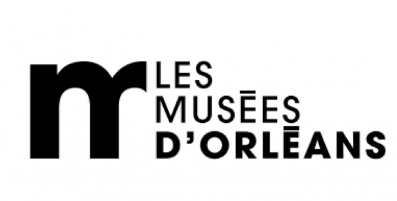
Olivia Voisin
Museum Director and Curator
Spring and Fall 2022

- Museums
- Houston
- Los Angeles
- New York
- Washington, DC
“Making the collections both physically and intellectually accessible to the public, by working to ensure that they are comprehensible to one and all.”
I am a museum curator and an art historian specializing in the nineteenth century and the relationships between the art forms. Since 2015, I am also Director of the Orléans Museums and Curator of Contemporary Collections at the Orléans Museum of Fine Arts. Throughout my career, I have focused on the need to make the collections both physically and intellectually accessible to the public, by working to ensure that they are comprehensible to one and all.
I have made modes of presentation and visitor support key aspects of our various projects to reorganize the Orléans Museums’ collections, particularly the redesign of the itinerary at the Museum of Fine Arts–a project underway since 2016. The narrative progression, the provision of new written outreach material offering keys to a historical, artistic and socio-economic interpretation of the artworks, the choice of presentations evoking the tastes of each era or spotlighting the museum’s founders… these are elements of the visitor itinerary that can combine to create an immersive experience. Another source of my reflection is how we deal with the contents of the storerooms: artworks that are unrelated to movements currently in vogue, and others that require major conservation treatment or have been put away for various reasons represent a hidden heritage that visitors are invited to discover during the overhaul of a collection, or on the occasion of major restoration operations.
One such exhibition, “Et in Arcadia… Fragments de collection” (2019), introduced visitors to the reality of the sculpture storeroom and explored issues such as changes related to historical context (wars) or the vagaries of fashion (such as the disinterest in plaster in the twentieth century), raising the question of choices in terms of conservation and display. I created the new itineraries at the Museum of Fine Arts by stepping beyond the boundaries of curatorial choice to focus on presentation solutions that give each work of art its rightful place. Respectful of the public nature of the collections, I see the museum as a place that guarantees universal access to all the artworks, in optimal conditions designed to enhance each visitor’s personal experience.
The aim of this residency is to compare approaches based on the notion of the “transparency” that museums must offer their visitors, notably by providing access to public collections and by sharing them and making them visible and comprehensible to all. This reflection is underway within the framework of the new scientific and cultural project of the Orléans Museums that are part of the reorganization of the Museum of Fine Arts’ collections and, in the near future, of the Musée historique et archéologique de l’Orléanais at Hôtel Cabu.
By meeting the key players (museum directors, collection curators and managers, outreach teams) involved in these reflections at American museums, I will gain an overview of the range of available solutions, according to the history and territorial specificities of each particular institution. Beyond the criteria of personal choice, the starting point for a reflection on the restructuring of collection layout and presentation should be the search for forms of presentation that are respectful of both the artwork and the visitor and provide an updated perspective on the collections. By observing the initiatives, questioning the approaches and intentions, and understanding the successes and difficulties, I hope to compare, improve, and strengthen my own practice within the Orléans Museums’ project.
Issues relating to museums’ transparency concerning their collections are considered differently according to the institution, its status, and the territory in which it is established. French-American exchanges are particularly enriching due to the diversity of local dynamics and the objectives of each museum as it works with communities and associations with a view to helping all visitors connect with its collections.
This kind of reflection implies contacting fine art and history museums involved in redesign projects or in-depth restructuring. The residency will have two parts: a first period on the East coast, in Washington, DC, and New York City, at museums that are reconsidering their layouts (such as the National Gallery of Art, the Hispanic Society and the Frick collection in New York, the Virginia Museum of Art in Richmond, and the Clark Institute) and a second period, in California, focusing on the discovery of another region and different situations–for example, by meeting the LACMA team at a time when a project is getting underway to find different ways of re-engaging the public with the collection.
During the course of this residency, intended to encompass many different situations, I will undoubtedly meet other interlocutors from museums specialized in different fields. My express intention is for these meetings and the ensuing discussions to nourish the approach we promote at the Orléans Museums: the idea of an open museum that encourages public access to a collection that the institution is duty bound to share with the widest possible audience.
In partnership with

Musées d’Orléans
Born in 1825 from an appeal for donations, the collections of the Orléans museums are today divided between the Musée des Beaux-Arts, the Hôtel Cabu – Musée d’Histoire et d’Archéologie and the Museum for Biodiversity and the Environment. The Musée des Beaux-Arts hosts one of the main French collections of European art from the fifteenth to the twentieth century. Its history, the result of a longstanding philanthropy, is the basis for the recent redeployment of 1,100 works in a narrative museography.


